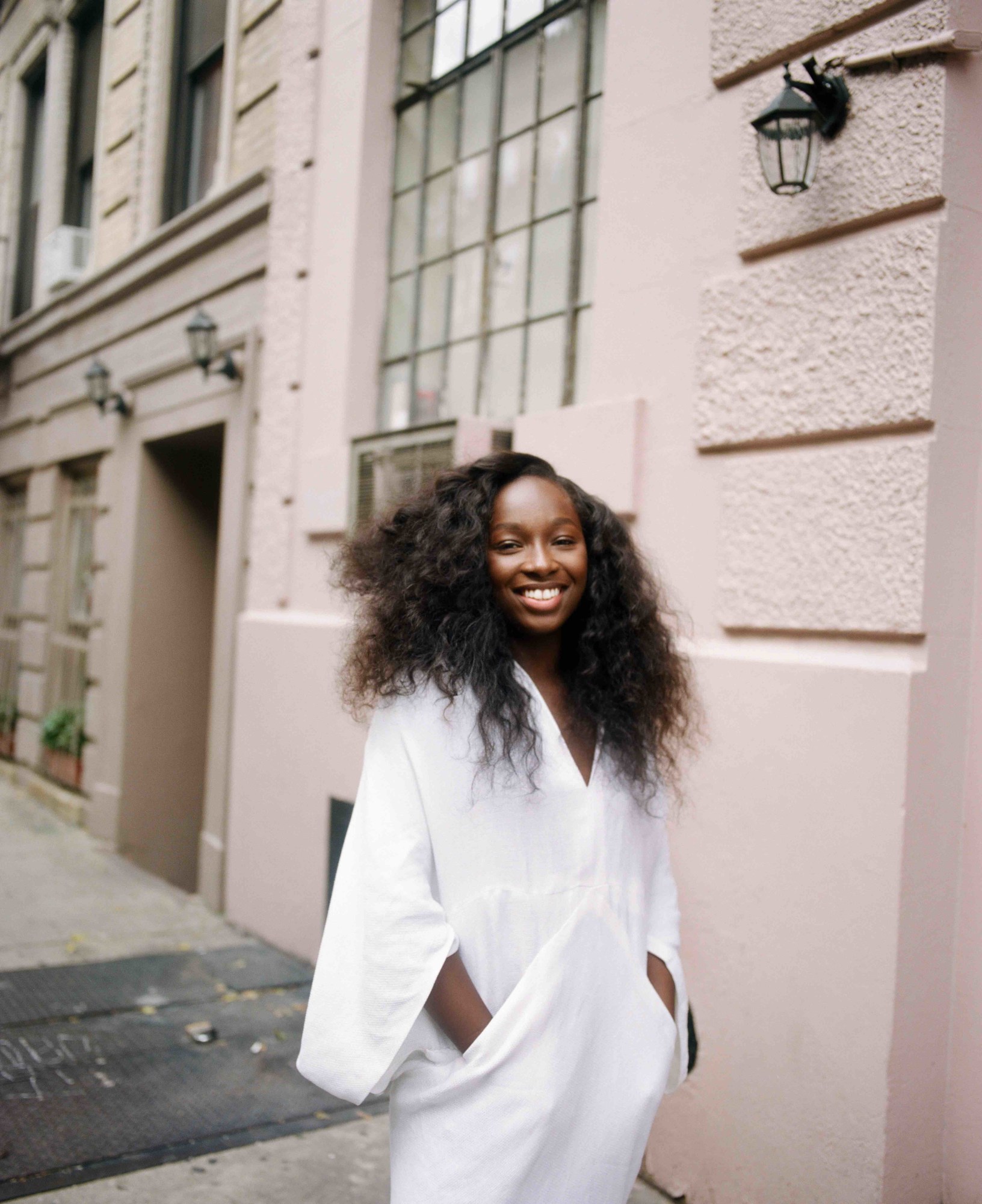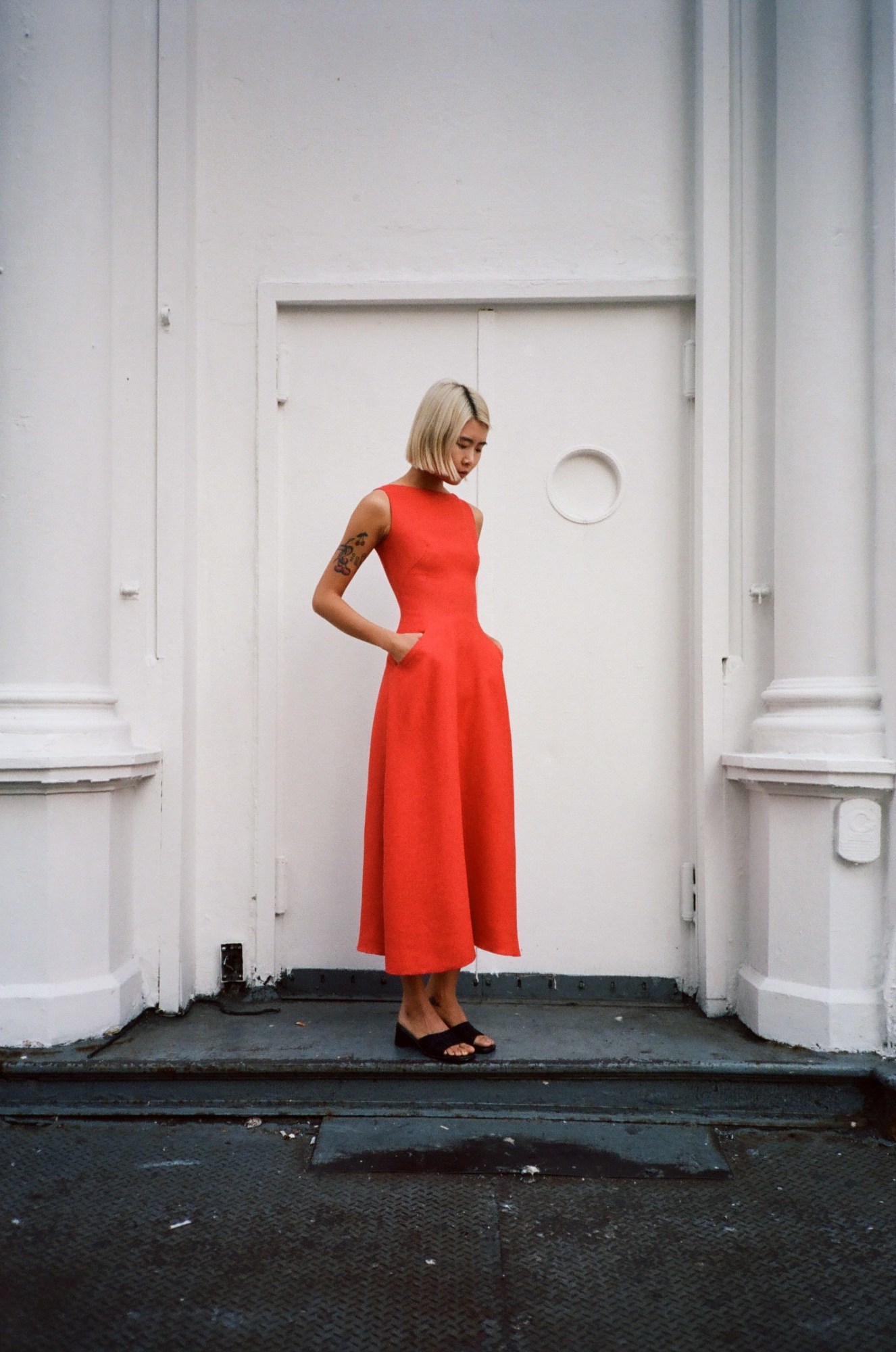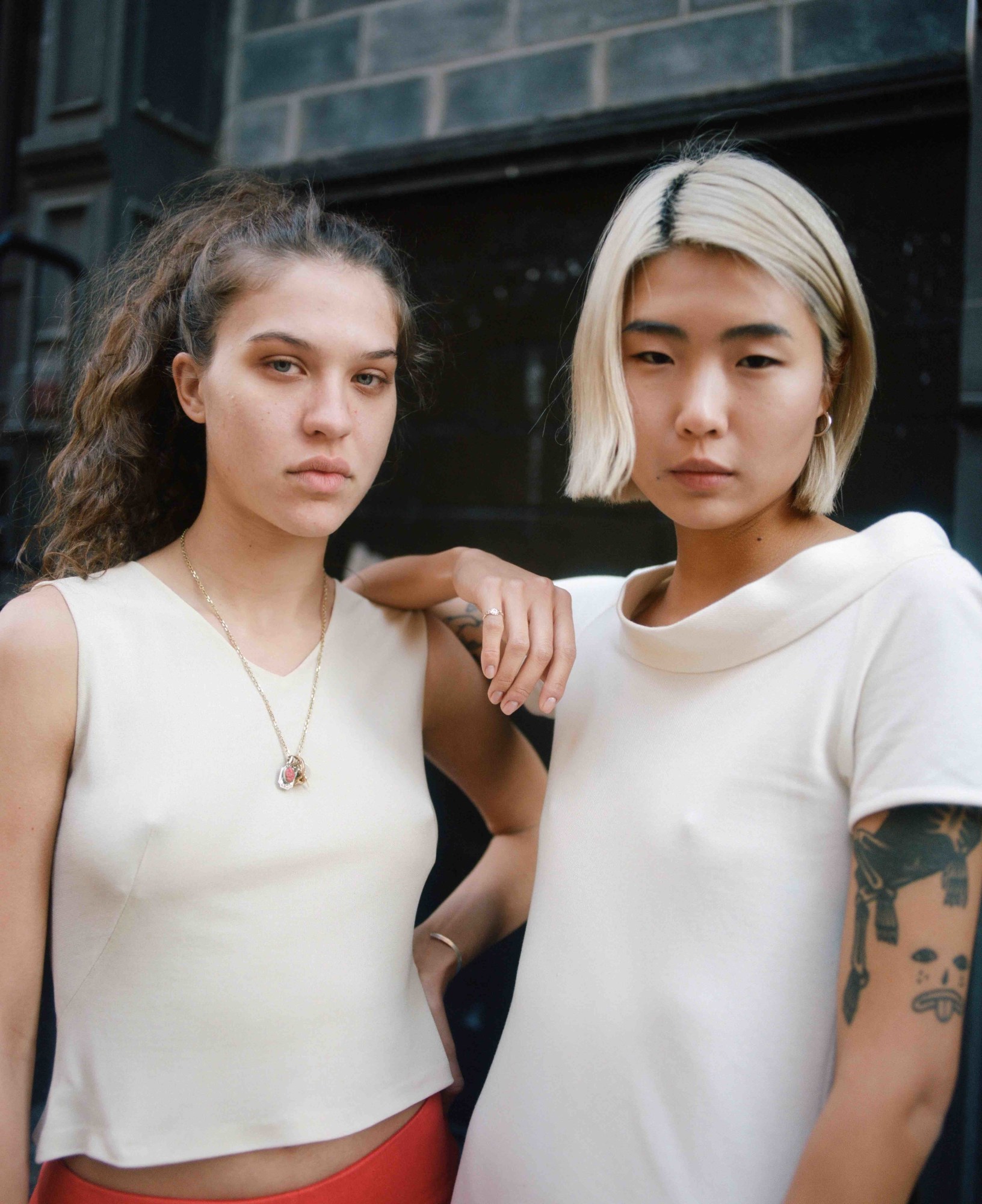When I visit Sybilla’s pop up shop on Mercer Street, I’m greeted by racks of the Spanish designer’s signature cocoon-like silhouettes. These shapes are new designs, but as she demonstrates the many ways to wear one flowing jacket, I’m reminded of a grainy YouTube upload documenting one of her earliest shows from 1983, the same year she launched her eponymous label in Madrid. Until 1991, the Spain-based label showed its playful designs on the runways of Tokyo and Paris, where its final fete featured jugglers, acrobats, and an orchestra. In many of Sybilla’s energetic and humorous shows, models twist up and untie their seemingly structured garments. “I love clothes that you can play with and transform,” Sybilla says. “Clothes that can follow you and adapt to different occasions, personalities or ages.”
Spending more time in her Mercer Street space, it’s clear that versatility is truly the hallmark of Sybilla’s practice. Frank Ocean’s Channel Orange cuts play between soothing Spanish guitar tracks. Her twenty-something son, Bruno, arrives on a skateboard and in a beat up Levi’s bomber. He chats to the shop associates who’ve paired his mother’s modernist designs with scuffed Timberlands and Canal Street chokers. “The connection with the younger generations has been beautiful and surprising. I love to see women trying clothes on and meeting each other,” she says. It’s this youthful energy that delights Sybilla most.
And why shouldn’t it? Though she’s been heralded as the most important Spanish designer since Cristobal Balenciaga, her pieces haven’t seen a runway since that final circus celebration.Since stepping off the catwalk and breaking free from European fashion’s frenetic pace, she’s worked her own way. She produced collections under sister line Jocomomola exclusively for the Japanese market, developed cosmetics for Shiseido, designed home objects including candles and rugs for Spanish manufacturer Nanimarquina, and even collaborated with Louis Vuitton.
But Sybilla’s new fall collection is special. It’s her first following a 10 year hiatus, during which time she sold her original brand all-together, relocating to Mallorca to pursue her passion for agricultural projects. “I broke down when I was at my most successful moment,” she says, “but success doesn’t really nourish you. Friends, fun, learning, finding meaning and purpose to what you do helps. Let’s see if I can figure it out this time.”

What motivated you to begin designing again?
I sold my brand 10 years ago. I really wanted to dedicate myself to do other things and during the years away, I was able to make many of my dreams come true. I finally managed to get my brand back [from investors] two years ago after a long legal battle, and I felt ready to come back. I was hungry for clothes and I didn’t find what I looked for. Years ago I was not able to follow the game, but now, maybe there is a place for something a bit different. So I decided to jump in again.
Tell us more about the collection you showed in March. What was inspiring you?
It was all about celebrating women and their individuality. I wanted to do pieces that made a woman’s life easier, that could bring out the best in her. The collection is very playful, relaxed, but also elegant and full of small surprises. The fabrics are beautiful and special — mixing natural and technological fibers together in a way that works quite well.
Did you do any digging or research into your own archive, or are these shapes entirely new?
Most of the shapes are completely new, but there is still a lot of my usual way of doing things, my obsessions. It’s a personal way of making patterns and fitting the clothing on the body to make the most of it. The clothes should be able to speak for themselves; not because of the brand, but because they are beautiful and make you happy. I want to make clothes that give strength and joy — that make women shine.

With all the recent creative director shake ups, we’ve been discussing if the fashion system has hit a breaking point with such a demanding pace. How do you see it?
I wish I can find the way to be happy and do this job. I know this is one of the biggest challenges. It’s also important for me to create a positive impact while working in fashion. I am very interested in where are clothes produced, who makes them, the story behind the materials. Fashion is such a big industry and it could bring blessings to places where help is needed. I believe we could apply our creativity to this side of the business, also.
What’s most exciting about the future to you?
We are figuring out the next steps as we go. I am very happy putting a team together and finding the size of business we can handle while remaining honest and fresh. I am loving our tour of popups around the world, like a circus from town to town. I count on doing quite a lot of it during the next years.
We are also figuring out a model of production that could create jobs where they are needed. We recently created a handmade felt workshop for the winter collection and I am ready to do other experiments like this in Spain, where refugees are knocking on our doors. I’m very interested in creating jobs in Africa, too. Fashion could be a great instrument for social transformation in so many ways and that’s one of the most exciting things for me.
Credits
Text Emily Manning
Photography Zora Sicher
